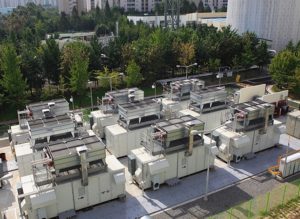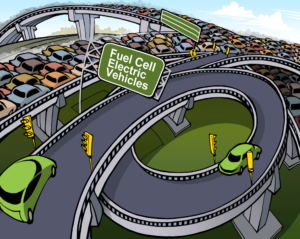Facts, Figures, and Findings from EPRI Research, Reports, and Other Sources

The Health and Safety Benefits of Electrifying the Workplace
An EPRI Quick Insights brief points to health and safety benefits of efficient electrification in commercial and industrial facilities. Examples include:
An EPRI Quick Insights brief points to health and safety benefits of efficient electrification in commercial and industrial facilities. Examples include:
- Replacing combustion engine–driven forklifts with electric forklifts can reduce noise pollution, refueling hazards, and worker exposure to carbon monoxide.
- Replacing chemical water treatment with electric processes such as ultraviolet rays and ozone removes harmful chemicals from the workplace and eliminates worker exposure.
- Replacing natural gas fryers and griddles with electric equipment in commercial kitchens reduces ambient temperatures and eliminates exposure to open flames and combustion by-products such as ...
Read More

The Rise of Microgrids Could Be Good News for Fuel Cells
After decades of high expectations and low adoption, stationary fuel cellsstationary fuel cells may be poised for market growth in distributed generation applications, according to an EPRI Strategic Intelligence Update. Fuel cells offer reliable, 24/7, quiet operation along with the highest efficiency and lowest emissions of all fuel-based generation technologies. But hydrogen fuel management along with fuel cells’ high upfront costs, low returns, and slow ramp rates relative to engines, turbines, and other combustion-based technologies have proven to be key barriers to adoption. While those challenges remain significant, ...
Read More
After decades of high expectations and low adoption, stationary fuel cellsstationary fuel cells may be poised for market growth in distributed generation applications, according to an EPRI Strategic Intelligence Update. Fuel cells offer reliable, 24/7, quiet operation along with the highest efficiency and lowest emissions of all fuel-based generation technologies. But hydrogen fuel management along with fuel cells’ high upfront costs, low returns, and slow ramp rates relative to engines, turbines, and other combustion-based technologies have proven to be key barriers to adoption. While those challenges remain significant, ...
Read More

EPRI Simulates a Flexible, Reliable Distribution Feeder with High-Penetration Renewable Resources
In the laboratory, EPRI successfully demonstrated an open architecture to coordinate, control, and dispatch distributed energy resources and to support grid operations. Results suggest that with a robust command-and-control architecture, utilities can use high penetrations of distributed renewables for voltage control, transmission support, and other grid services. At the National Renewable Energy Laboratory, EPRI built an analog simulator to model a 10-mile distribution feeder connected to hundreds of distributed energy and demand response resources. Standard messages on a recursive network architecture enabled interoperability among the resources, and EPRI ...
Read More
In the laboratory, EPRI successfully demonstrated an open architecture to coordinate, control, and dispatch distributed energy resources and to support grid operations. Results suggest that with a robust command-and-control architecture, utilities can use high penetrations of distributed renewables for voltage control, transmission support, and other grid services. At the National Renewable Energy Laboratory, EPRI built an analog simulator to model a 10-mile distribution feeder connected to hundreds of distributed energy and demand response resources. Standard messages on a recursive network architecture enabled interoperability among the resources, and EPRI ...
Read More

Despite great technological advances over the past two decades, an EPRI study concludes that fuel cell electric vehiclesfuel cell electric vehicles still lack the low cost and long life needed for commercial viability, with no real prospects for market share before the mid-2020s. Since the early 1990s, several major automobile manufacturers have invested billions of dollars to develop proton exchange membrane fuel cells for electric vehicles. Government R&D programs in the United States, Japan, and Europe have led to prototypes and early-production vehicles with good drivability. Drawing on nonproprietary information from technical literature, conferences, developers, and fabricators, researchers compared the ...
Read More
Read More

As a plentiful power plant by-product, flue gas desulfurization gypsum flue gas desulfurization gypsum offers great potential to improve water quality and protect aquatic ecosystems by reducing phosphorus runoff from fertilized fields, an EPRI study reveals. Such runoff can degrade surface water quality and cause algal blooms. These have led to the temporary loss of drinking water in Toledo, Ohio and the creation of ecological “dead zones” in the Gulf of Mexico and Lake Michigan. Laboratory research had indicated that applying flue gas desulfurization gypsum to agricultural fields can reduce phosphorus runoff. Since 2006, the electric power sector has tripled ...
Read More
Read More

